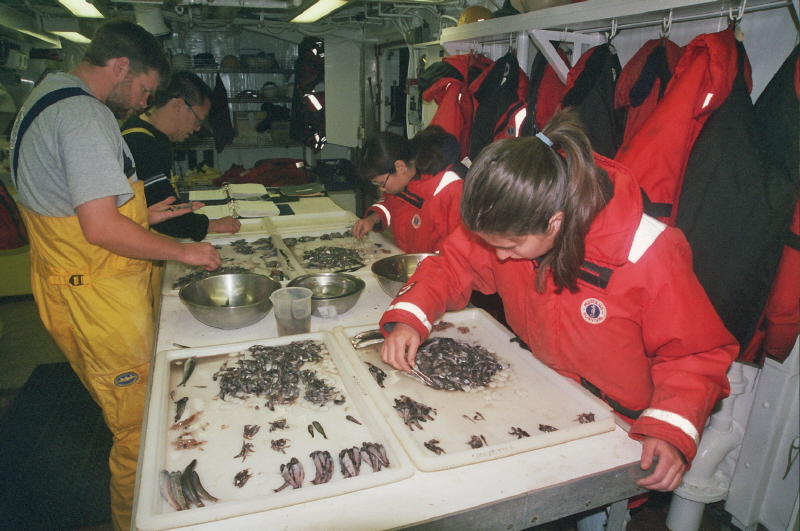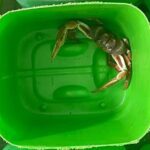California sea lions and Cassin’s auklets were starving. Tropical fishes were found swimming in Alaskan waters. It was 2014, and a large patch of the northeast Pacific Ocean was much warmer than usual. Quickly dubbed, “The Blob,” this patch grew until it stretched from Mexico to Alaska, persisting until late in 2016.
The warm water caused cascading ecosystem effects as low plankton populations reduced the food availability for everything up the food chain. But in 2015, researchers from the National Oceanographic and Atmospheric Administration (NOAA) were surprised when they pulled up a trawl with one of their largest hauls ever of young rockfish.
Ocean conditions were so poor that the researchers were fascinated by the amount of young rockfish they collected between 2014 and 2016, remembered Dr. Isaac Schroeder, a researcher from the University of California Santa Cruz. “That was kind of contrary to what we believed would happen,” he said.
In a study recently published in the Canadian Journal of Fisheries and Aquatic Sciences, Schroeder and colleagues set out to understand how ocean properties affect the survival of young rockfish. They found that although surface waters had warmed, colder, highly oxygenated water below the surface allowed rockfish to thrive.

Researchers with one of the largest juvenile rockfish hauls ever encountered in 34 years of surveys, collected during the middle of “The Blob” (Photo | NOAA).
Called rockfish because the adults live among rocks on the seafloor, the species in the genus Sebastes are long-lived and slow-growing. Yelloweye rockfish can live up to 147 years, making them one of the world’s longest living fish species.
Prized for their taste, rockfish have been fished on the West Coast since the late 1800s, but high catches have led to severe population declines in the 1990s. Seven species were declared “overfished” in the early 2000s. Fortunately, widespread fisheries closures and recent high survival of young rockfish have contributed to the recovery of five species in the last decade—much faster than scientists had predicted.
Prior to the study, researchers had already identified some ocean properties that affect rockfish survival, but ‘The Blob’ presented an unusual set of conditions. According to Schroeder, it was “a natural experiment.”
The researchers compared 34 years of data from surveys of juvenile rockfish with climate indicators such as the Pacific Decadal Oscillation and information about water temperature, salinity, and dissolved oxygen during those years. Importantly, realizing that surface conditions might not tell the whole story, they examined water masses 100–300 m deep in the ocean where adult rockfish live.

Researchers from the NOAA sort young rockfish by species during a sampling cruise (Photo | NOAA).
Examining the water at depth was important, as along the west coast of North America, currents mix water from the North Pacific with water from near the equator in different proportions each year. These water sources have different properties: the colder, fresher North Pacific water is what researchers call “minty” and has high levels of dissolved oxygen, while the warmer, saltier equatorial water is “spicy” and low in oxygen.
The researchers observed that years with more minty water had a significantly higher number of young fish. Like many fish species, rockfish are sensitive to low oxygen, so highly oxygenated water from the North Pacific allowed females to produce more offspring, which are more likely to survive to adulthood. Even though the surface water was unusually warm during The Blob years, cooler and more hospitable conditions were hiding underneath.
Young rockfish are important food for many species in the northeast Pacific, from seabirds to salmon, so understanding how their numbers change with ocean conditions is critical for the entire ecosystem. The researchers’ observations demonstrate the importance of assessing water properties in the habitats where species live, and not only at the ocean’s surface. Fisheries managers can use the results in rockfish population models to prevent overfishing in the future, especially as unusual ocean conditions like The Blob become more frequent with climate change.
Read the full paper: Source water variability as a driver of rockfish recruitment in the California Current Ecosystem: implications for climate change and fisheries management in the Canadian Journal of Fisheries and Aquatic Sciences.




